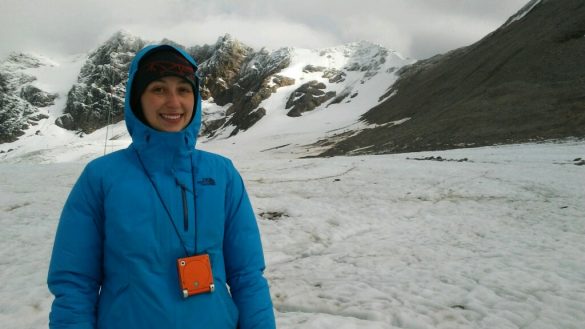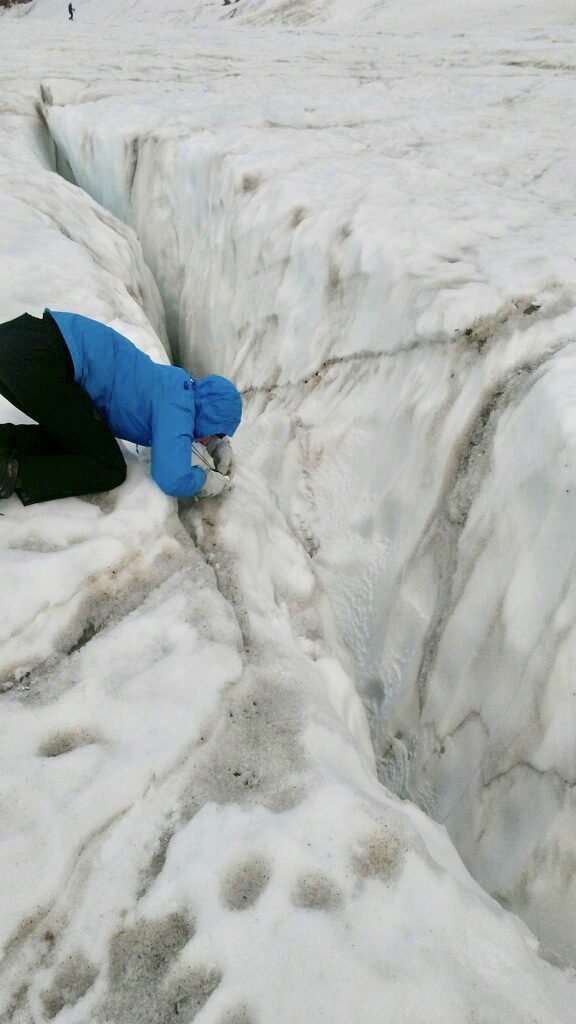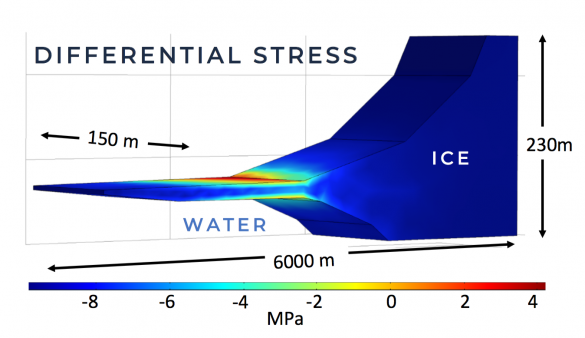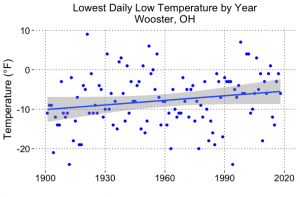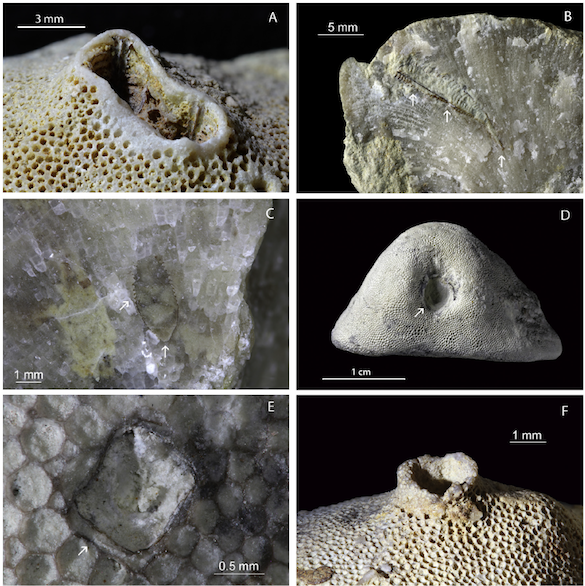 Hurricane, Utah — Every day is a little warmer. Today the team worked on a long section of the Carmel Formation in Dammeron Valley (locality DV: N 37.27629°, W 113.63712°). It is a complete section oof the Co-Op Creek Limestone Member, from its lower contact with the Temple Cap Formation to its upper contact with the Crystal Creek Member.
Hurricane, Utah — Every day is a little warmer. Today the team worked on a long section of the Carmel Formation in Dammeron Valley (locality DV: N 37.27629°, W 113.63712°). It is a complete section oof the Co-Op Creek Limestone Member, from its lower contact with the Temple Cap Formation to its upper contact with the Crystal Creek Member.
 Our objective was to find the same oolitic unit we measured and sampled at the Water Tank Road (WTR) locality yesterday. We want to see what facies differences are evident within an ooid shoal over some distance. We found the unit with the help of “Nick’s Sandstone” present as a marker bed about five meters above. The unit is shown above. It still has four parts (A-D), but the A unit at the base has a significant siliciclastic component. This Dammeron Valley (DV) unit is also about half as thick as that at WTR. The DV section is 3.74 km north of the one at WTR.
Our objective was to find the same oolitic unit we measured and sampled at the Water Tank Road (WTR) locality yesterday. We want to see what facies differences are evident within an ooid shoal over some distance. We found the unit with the help of “Nick’s Sandstone” present as a marker bed about five meters above. The unit is shown above. It still has four parts (A-D), but the A unit at the base has a significant siliciclastic component. This Dammeron Valley (DV) unit is also about half as thick as that at WTR. The DV section is 3.74 km north of the one at WTR.
 Shelley explored the unit and found very faint bedding structures, a mix of wave and current ripples. She and Anna again collected data to ascertain current and wave directions.
Shelley explored the unit and found very faint bedding structures, a mix of wave and current ripples. She and Anna again collected data to ascertain current and wave directions.
 Shelley and Anna are here measuring current and wave directions. Photo by Nick.
Shelley and Anna are here measuring current and wave directions. Photo by Nick.
 Here is Evan in his field mode. My photo of him yesterday was faceless.
Here is Evan in his field mode. My photo of him yesterday was faceless.
 This is the top of the Temple Cap Formation in Dammeron Valley. The Carmel is immediately above. Here you can see the distinctive red siltstones and an interval of gypsum beds at the very top.
This is the top of the Temple Cap Formation in Dammeron Valley. The Carmel is immediately above. Here you can see the distinctive red siltstones and an interval of gypsum beds at the very top.
 It was our pleasure to briefly visit the St. George Dinosaur Discovery site today. This is a fantastic museum and laboratory built over bedding planes of the Moenave Formation (Lower Jurassic) covered with dinosaur tracks and sedimentary structures.
It was our pleasure to briefly visit the St. George Dinosaur Discovery site today. This is a fantastic museum and laboratory built over bedding planes of the Moenave Formation (Lower Jurassic) covered with dinosaur tracks and sedimentary structures.
 The sediments formed along a shoreline of ancient Lake Dixie, so there is a diverse mix of terretrial and aquatic features.
The sediments formed along a shoreline of ancient Lake Dixie, so there is a diverse mix of terretrial and aquatic features.
 We mainly wanted to visit with Andrew Milner (on the left), the site paleontologist and curator. He always has good paleontological stories and advice. Today he showed us a tiny but significant ammonite found in the Carmel at the Eagle Mountain Ranch locality. We also looked at various vertebrate fossils being prepared in his lab.
We mainly wanted to visit with Andrew Milner (on the left), the site paleontologist and curator. He always has good paleontological stories and advice. Today he showed us a tiny but significant ammonite found in the Carmel at the Eagle Mountain Ranch locality. We also looked at various vertebrate fossils being prepared in his lab.
 Finally, we need to show our beautiful headquarters for this trip — an Air BnB in Hurricane. Since camping is not possible for us, this turned out to be a surprisingly affordable housing option. The garage alone is a bonus for organizing samples and equipment. We are plenty comfortable here!
Finally, we need to show our beautiful headquarters for this trip — an Air BnB in Hurricane. Since camping is not possible for us, this turned out to be a surprisingly affordable housing option. The garage alone is a bonus for organizing samples and equipment. We are plenty comfortable here!








































